A Placemaking Journal
How to Make Smart Growth More Lovable and Sustainable
While on my way to a dental appointment last week — not my favorite activity, truth be told — I had the distinct pleasure of walking through Georgetown, Washington’s oldest neighborhood and one of its most lovely. As I ambled through the historic, tree-lined streets, I was reminded of how our older neighborhoods so often embody the characteristics that we now ascribe to “smart growth.”
In particular, Georgetown has a walkable urban density; well-connected streets and sidewalks that make it notably pedestrian-friendly; a central, convenient location just a mile or so from the heart of downtown; good transit service; many shops, restaurants and civic amenities mixed in with, or a ridiculously easy walk from, the neighborhood’s homes.
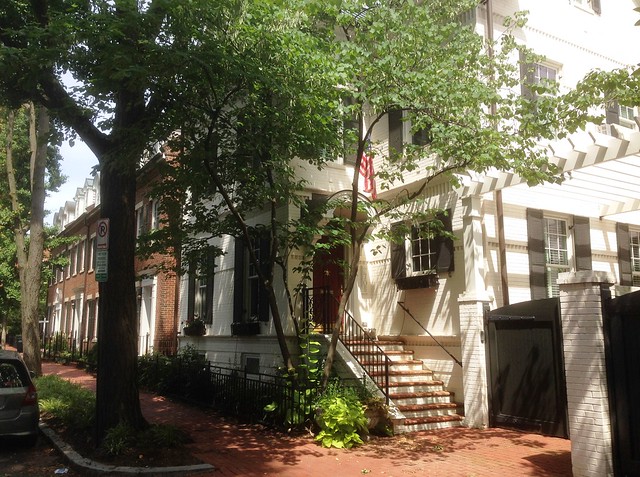
These attributes are the essence of what those of us who advocate smart growth advocate for. And, while Georgetown’s historic district is the one closest to my home, DC certainly has other lovely old neighborhoods with similar features, and so, actually, do most cities in America. Perhaps you have your own favorite.
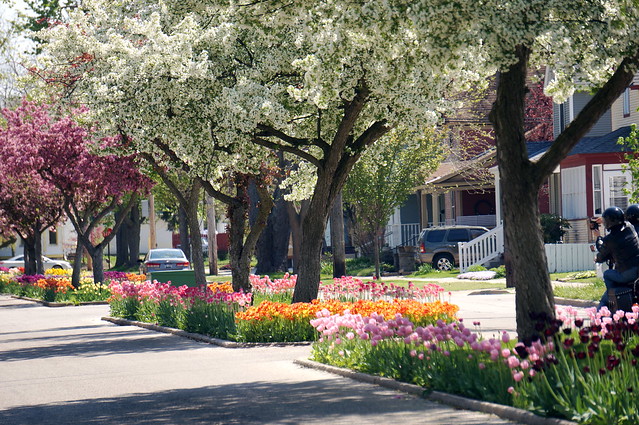
The smart growth characteristics of these older neighborhoods make them terrific for the environment and for public health: they reduce transportation emissions by obviating driving trips and shortening those that people do take; they save land by keeping development compact and obviating additional increments of sprawl; they promote physical fitness and health with walkability.
The lovability of historic neighborhoods
But there is something else about Georgetown and other older city neighborhoods that, in my view, is just as critical to their enduring success: they tend to be lovable. Some readers may be cringing at my use of such a mushy word. But, hey, I’m that kind of guy, and in the world of placemaking we should be thinking about exactly what sorts of places we are making, not just for ourselves and the here and now but also for the long run, for future generations. We should be doing the best we can.
I for one want us to be fashioning built environments that are not just functional but also beautiful, that will last. As I’ve written before, it does little good to create a place that is sustainable if it is not in fact sustained, if it is not cared about, if it is not nourished and defended over time.
I have long believed this, but it was my friend Steve Mouzon who first articulated it for me, in his wonderful book The Original Green. The fact that lovability is mushy and difficult to measure does not make it unimportant. Ultimately, sustainability is where the heart is.
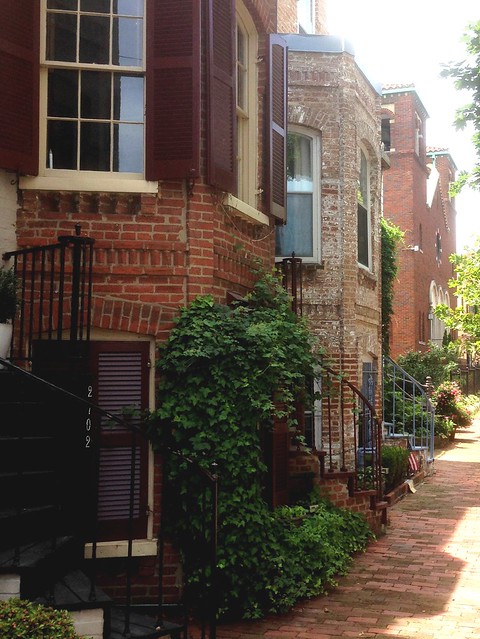
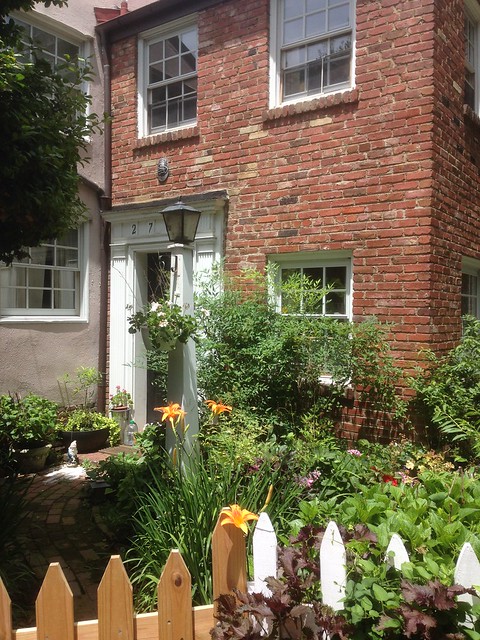
So what are some of the things that make a place like Georgetown lovable? Well, a human scale rather than an overwhelming one, for starters. Harmonious architecture, for another, much of it built with obvious pride of craftsmanship. A diversity of building sizes and types. The presence of nature, in the case of Georgetown most notably through its mature trees, dispersed throughout the neighborhood. (An even better example of a historic district with integrated nature might be Savannah, with its wonderful green squares punctuating the old city’s inherent urbanism.) A great lovable neighborhood should also have one or more great public spaces to encourage gathering and provide focal points and definition.
Does new smart growth measure up to the old?
Unfortunately, these elements of lovability so common in our older neighborhoods are exactly what I find missing in much of what passes for smart growth today. Contrast the two scenes below of compact, transit-accessible, mixed-use neighborhoods: One is historic; the other is relatively new. Both function extremely well on indicia of smart growth performance. But one has survived for over a century. Will the other? Should it?
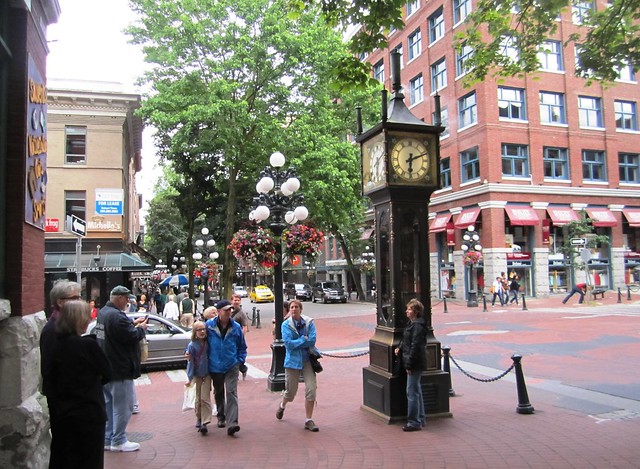

The smart growth movement is today celebrating the building of walkable urban places (wonderfully coined “WalkUPs” by thought leader Christopher Leinberger). While all of them are better than the suburban sprawl that dominated past decades, I find only some worth celebrating with enthusiasm; others, not so much. In the 1990s, when the smart growth movement coalesced, the building of suburban sprawl still dominated not only the American landscape but also the overwhelming majority of development conversations. It seemed a daunting task to advocate even for the basics, for more compact development, for public transit and mixed use. We had to settle for what we could get.
But, now, cities are rebounding dramatically, in many regions growing faster than suburbs. The basic tenets of smart growth and new urbanism are taught in nearly every planning school in the country. More and more municipalities are on board, too, clamoring to adopt new plans and zoning regimes to encourage exactly the kind of development that seemed so out of reach in the 1990s. While there will remain a market for conventional suburban development, demographic analysis shows that the growth in demand is definitely trending toward more urban preferences.
It’s looking more and more like we’re now in a new paradigm altogether, one in which all the trends are favorable to less sprawling, more walkable neighborhoods.
(Well, all but one, unfortunately: the elephant in the room is a lack of affordability in smart development, whether it’s based in a new neighborhood or a historic one. That is proving a very tough nut to crack, and I wish I had the answers. The “good” side of this challenge, I suppose, is that it stems from such high demand for these kinds of neighborhoods. As my colleague Scott Doyon has articulated, it’s a problem of success rather than one of failure. A lot of urban neighborhoods were affordable when they were disinvested, left behind in the suburban boom years when few people with choices wanted to live there.)

We’re now getting much of what we wanted, and I think it’s time to evaluate whether there are some lessons we should be learning from our success. Twenty years have gone by with this movement, and it’s time for a new generation of aspirations for cities and suburbs. To make places more welcome, more lovable and embraceable – to make places that we can not just accept but also be proud of – we could do a lot worse than to look back at those historic neighborhoods that have in fact been loved and that have endured over time, and to emulate what has made them so special. (Some newer, in-town smart growth projects do exactly that – Atlanta’s Glenwood Park comes immediately to mind – but many do not.) I’m not saying we necessarily must emulate them in architectural style, by the way; more that we should pay attention to things such as their scale, building diversity, and use of public spaces.
Let’s go greener, too
That said, lovability is only where we should begin. In our new-generation agenda for better places, let’s not only look back: let’s also look forward and borrow from the very substantial advances that are being made in environmental thinking and technology for buildings and infrastructure. Let’s recognize that it is now the twenty-first century; given what we know today, smart growth isn’t very smart if it isn’t also green.
I’m not going to elaborate on the reasons why. Pope Francis has done a far more eloquent job of articulating the substantial environmental challenges facing our planet, “our common home,” than I ever could. And the good news is that the basic smart growth agenda we have been following since the 1990s does indeed get us part way there, as I noted above.

But, in the era of very tangible climate change, we can and should do better. The smart growth movement already advocates for greener forms of transportation and talks about “the built environment.” But residential and commercial buildings currently account for a larger share of our carbon emissions than does transportation. Why aren’t we also advocating for green buildings – buildings that save energy, water, and material resources – as a basic part of our agenda? Many people already do advocate for green buildings, of course, but such advocacy has never been an explicit part of the smart growth or new urbanist agenda. (I’m not even going to get into more advanced green technology such as on-site renewable energy sources and district energy systems; green buildings would be an important start.)
Similarly, we already advocate for “complete streets,” as well we should. Why aren’t we also advocating for greener streets, as well as other forms of green infrastructure for stormwater management? I could go on and on – the integration of nature and neighborhood parks into the built environment, mentioned above in connection with lovability, is also important to public health – but my main argument here is not the bill of particulars but the more overarching point: a built-environment agenda for this century must become more holistic if it is to remain relevant to the challenges of our time. We can do this; we will be better leaders if we do; and the places we make will be better for our efforts.
My running conversation
I have a longstanding conversation with a great friend who is a leader in the smart growth movement. I push him on these issues; he pushes back by saying that he isn’t trying to satisfy people like me but trying to satisfy people across the country who haven’t yet bought the smart growth basics. (And then we go back to talking about sports and people we know in common and continue our friendship, as I hope we always will.)

But, see, I think making our product more lovable could help sell it. It’s hard to sell a hodgepodge of throwaway high-rises with no green space or meaningful public amenities to someone who fears density. Those are not, in my opinion, worthy of the name “smart growth.” We should be better than that, instead advocating appropriate-to-the-context densities but at the same time insisting upon human-scale walkability and great neighborhood parks and public spaces.
And, as for including green features, maybe that’s for a different audience: we sell those to the increasing number of developers and municipal leaders who already get it about urbanism. But we include the green features in our advocacy for better places because it’s the right thing to do for the health of “our common home” on this earth.
Being “smart” in the twenty-first century requires no less.
Originally featured on the Huffington Post. Reprinted here with Kaid’s permission. Move your cursor over the images for credit information.
–Kaid Benfield
If PlaceShakers is our soapbox, our Facebook page is where we step down, grab a drink and enjoy a little conversation. Looking for a heads-up on the latest community-building news and perspective from around the web? Click through and “Like” us and we’ll keep you in the loop.










